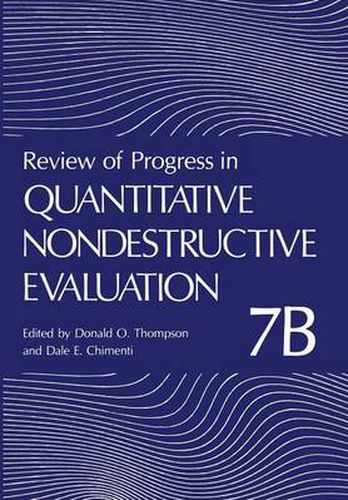Readings Newsletter
Become a Readings Member to make your shopping experience even easier.
Sign in or sign up for free!
You’re not far away from qualifying for FREE standard shipping within Australia
You’ve qualified for FREE standard shipping within Australia
The cart is loading…






This title is printed to order. This book may have been self-published. If so, we cannot guarantee the quality of the content. In the main most books will have gone through the editing process however some may not. We therefore suggest that you be aware of this before ordering this book. If in doubt check either the author or publisher’s details as we are unable to accept any returns unless they are faulty. Please contact us if you have any questions.
It has been shown both experimentally {2} and theoretically {2,3} that surface skimming SH waves propagating along symmetry axes of the texture have velocities that differ in proportion to the magnitude of any stress that lies along one of the symmetry axes. Specifically, the stress is directly proportional to the relative velocity difference through the equation -,–V ik=—V. -=ki) ( I) cr. = 2G (-V ~ ik where cr. is the stress in the direction i, G is the shear modulus and Vik is the ~elocity of an SH wave propagating in the i direction and polarized in the k direction. This rather simple relationship is particularly useful because the constant of proportionality involves only the well known shear modulus and the velocity term can be measured directly by observing the transit time shift when a transmitter-receiver pair of SH wave transducers are rotated through 90 degrees on the surface of the part. Experimentally, Equation (I) was tested on the web of railroad rails which had been loaded by a 200,000 pound mechanical testing machine {I}. The method of exciting and detecting the necessary surface skimming SH waves used electromagnetic acoustic transducers (EMATs) that operated through a magnetostrictive mechanism at high magnetic fields {4}. Wave velocities parallel and perpendicular to the axis of the rail on the web differed by the amount predicted by Equation (I) to an absolute accuracy of 30 percent in the worst case.
$9.00 standard shipping within Australia
FREE standard shipping within Australia for orders over $100.00
Express & International shipping calculated at checkout
This title is printed to order. This book may have been self-published. If so, we cannot guarantee the quality of the content. In the main most books will have gone through the editing process however some may not. We therefore suggest that you be aware of this before ordering this book. If in doubt check either the author or publisher’s details as we are unable to accept any returns unless they are faulty. Please contact us if you have any questions.
It has been shown both experimentally {2} and theoretically {2,3} that surface skimming SH waves propagating along symmetry axes of the texture have velocities that differ in proportion to the magnitude of any stress that lies along one of the symmetry axes. Specifically, the stress is directly proportional to the relative velocity difference through the equation -,–V ik=—V. -=ki) ( I) cr. = 2G (-V ~ ik where cr. is the stress in the direction i, G is the shear modulus and Vik is the ~elocity of an SH wave propagating in the i direction and polarized in the k direction. This rather simple relationship is particularly useful because the constant of proportionality involves only the well known shear modulus and the velocity term can be measured directly by observing the transit time shift when a transmitter-receiver pair of SH wave transducers are rotated through 90 degrees on the surface of the part. Experimentally, Equation (I) was tested on the web of railroad rails which had been loaded by a 200,000 pound mechanical testing machine {I}. The method of exciting and detecting the necessary surface skimming SH waves used electromagnetic acoustic transducers (EMATs) that operated through a magnetostrictive mechanism at high magnetic fields {4}. Wave velocities parallel and perpendicular to the axis of the rail on the web differed by the amount predicted by Equation (I) to an absolute accuracy of 30 percent in the worst case.